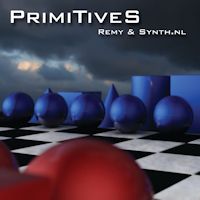
Last week Toine from
Sound Scapes send me the first results of his measurements of the studio. He measured on several positions in the room. Here you see a combined graph of my primary listening position (shown in red) and 1 meter behind that (shown in green). Then you see three green lines. 90 dB is the volume that was send out and the graph shows the room respons. Then the result should be between the 90 and 100 dB lines. As you can see it isn't even that bad. Only in the low end on my primary listening position the are some dips. So far this is consistent with the measurements we took. We only looked at the low end until 200 Hz, so this graph looks different because it shows the whole spectrum.

Here is another graph from a measurement that was taken just before the wall in the back of my studio (at the modular desk). Here you can see also some big peeks and dips. These are the problem frequencies I hear in the room. We also walked around in the room to determine where the standing waves occur. And especially in the very low end we could determine that there was a build up in the corner near by door. We did some sine waves at 25 Hz and the door started resonating very badly and it was immensly loud. The funny this is when I opened the door it was gone. So we determined right away that this would be a good corner to do something extra to dampen these standing waves.

Toine also did some RT60 (dampening) tests like I did with Hanz as well. The first thing Toine noticed is that the test results were quite consistent. He had seen that differently. Apparently due to background noise, but my studio is very quiet so there is no interferance what so ever. Which is a good thing of course. Again in the graph you see the red lines indicating the upper and lower boundaries that the measurements should be between. You see a peak in the high end that should be ignored. Toine told me that is the measurement microphones fault. But you can also see that at 80 Hz there is clearly still a peak. This means it takes too long for these frequencies to die out in the room. The rest lookes actually quite OK. Again confirming our previous findings that we should concentrate on the low end. Toine is now calculating and simulating what has to be done to make things better. I'll update you soon on this.
 Last week Toine from Sound Scapes send me the first results of his measurements of the studio. He measured on several positions in the room. Here you see a combined graph of my primary listening position (shown in red) and 1 meter behind that (shown in green). Then you see three green lines. 90 dB is the volume that was send out and the graph shows the room respons. Then the result should be between the 90 and 100 dB lines. As you can see it isn't even that bad. Only in the low end on my primary listening position the are some dips. So far this is consistent with the measurements we took. We only looked at the low end until 200 Hz, so this graph looks different because it shows the whole spectrum.
Last week Toine from Sound Scapes send me the first results of his measurements of the studio. He measured on several positions in the room. Here you see a combined graph of my primary listening position (shown in red) and 1 meter behind that (shown in green). Then you see three green lines. 90 dB is the volume that was send out and the graph shows the room respons. Then the result should be between the 90 and 100 dB lines. As you can see it isn't even that bad. Only in the low end on my primary listening position the are some dips. So far this is consistent with the measurements we took. We only looked at the low end until 200 Hz, so this graph looks different because it shows the whole spectrum. Here is another graph from a measurement that was taken just before the wall in the back of my studio (at the modular desk). Here you can see also some big peeks and dips. These are the problem frequencies I hear in the room. We also walked around in the room to determine where the standing waves occur. And especially in the very low end we could determine that there was a build up in the corner near by door. We did some sine waves at 25 Hz and the door started resonating very badly and it was immensly loud. The funny this is when I opened the door it was gone. So we determined right away that this would be a good corner to do something extra to dampen these standing waves.
Here is another graph from a measurement that was taken just before the wall in the back of my studio (at the modular desk). Here you can see also some big peeks and dips. These are the problem frequencies I hear in the room. We also walked around in the room to determine where the standing waves occur. And especially in the very low end we could determine that there was a build up in the corner near by door. We did some sine waves at 25 Hz and the door started resonating very badly and it was immensly loud. The funny this is when I opened the door it was gone. So we determined right away that this would be a good corner to do something extra to dampen these standing waves. Toine also did some RT60 (dampening) tests like I did with Hanz as well. The first thing Toine noticed is that the test results were quite consistent. He had seen that differently. Apparently due to background noise, but my studio is very quiet so there is no interferance what so ever. Which is a good thing of course. Again in the graph you see the red lines indicating the upper and lower boundaries that the measurements should be between. You see a peak in the high end that should be ignored. Toine told me that is the measurement microphones fault. But you can also see that at 80 Hz there is clearly still a peak. This means it takes too long for these frequencies to die out in the room. The rest lookes actually quite OK. Again confirming our previous findings that we should concentrate on the low end. Toine is now calculating and simulating what has to be done to make things better. I'll update you soon on this.
Toine also did some RT60 (dampening) tests like I did with Hanz as well. The first thing Toine noticed is that the test results were quite consistent. He had seen that differently. Apparently due to background noise, but my studio is very quiet so there is no interferance what so ever. Which is a good thing of course. Again in the graph you see the red lines indicating the upper and lower boundaries that the measurements should be between. You see a peak in the high end that should be ignored. Toine told me that is the measurement microphones fault. But you can also see that at 80 Hz there is clearly still a peak. This means it takes too long for these frequencies to die out in the room. The rest lookes actually quite OK. Again confirming our previous findings that we should concentrate on the low end. Toine is now calculating and simulating what has to be done to make things better. I'll update you soon on this.










No comments:
Post a Comment